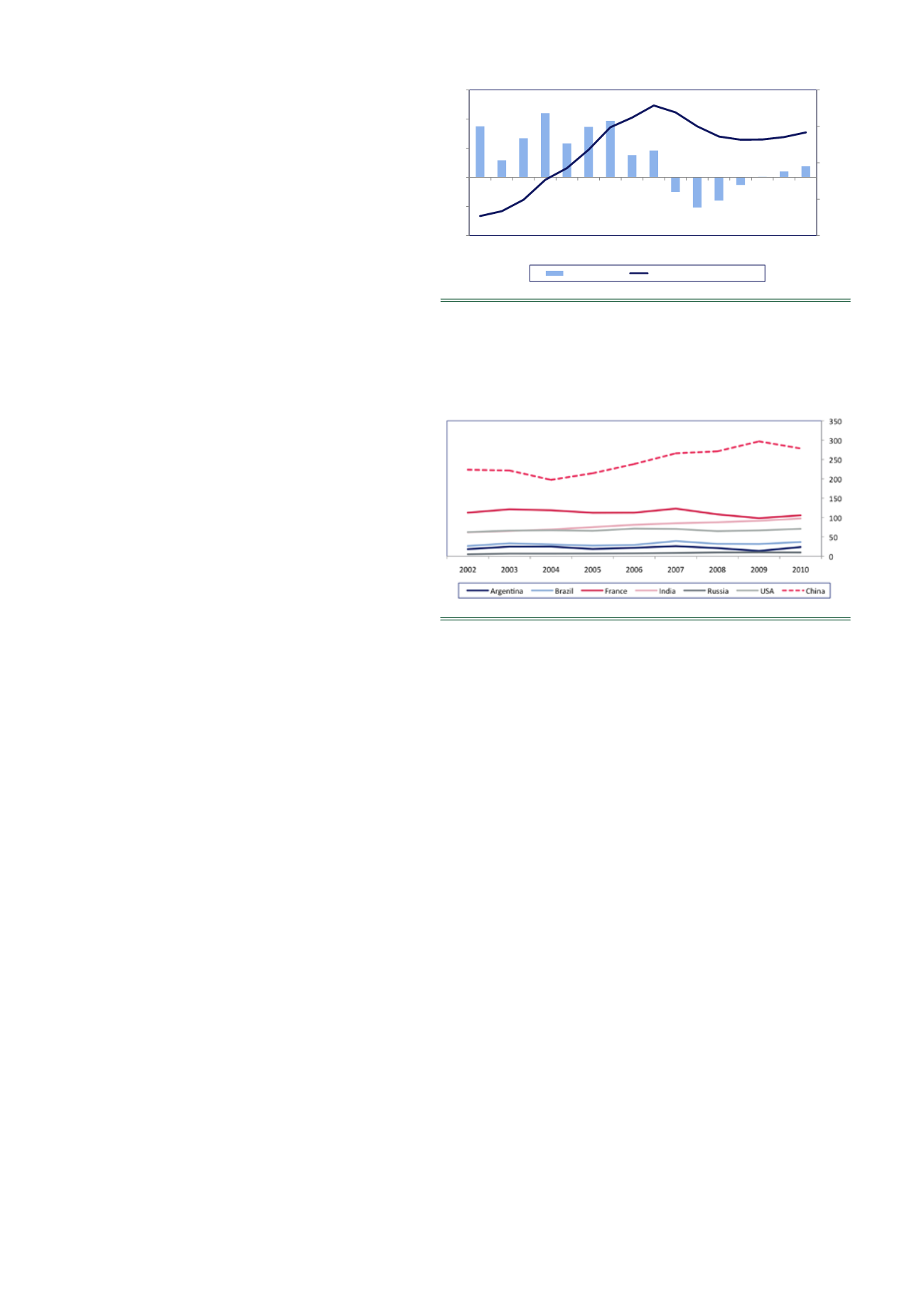
NOVEMBER 2016
| WORLD FERTILIZER |
19
n
n
Firstly, China is the only large producer of
nitrogen fertilizers that primarily uses coal –
instead of natural gas – as the raw material for
ammonia production, with ammonia being the
main component of most nitrogen fertilizers. This
is owing to the fact that Chinese coal is
significantly cheaper and more abundantly
available to domestic nitrogen producers than
natural gas; this is a situation that is in stark
contrast to producers in the US, Russia and the
Middle East and North Africa (MENA) region.
n
n
Secondly, despite the use of coal instead of
natural gas, Chinese nitrogen producers still face
some of the highest costs in the industry, as other
global producers have direct access to natural gas
that is cheaper than Chinese coal. This means that
they face lower input costs than their Chinese
peers. In a global comparison, the cost of Chinese
coal-based nitrogen production is above that of
most regions, including Western Europe, where
producers rely on relatively expensive natural gas.
Despite high operating costs, China continues to
be the world’s largest exporter of nitrogen fertilizers,
consistently producing large surpluses of nitrogen
products – urea in particular. The combination of
large surpluses and elevated production costs have
resulted in China becoming a swing producer on the
global market. Indeed, the country is able to channel
substantial amounts of fertilizers to the export
market at little extra cost if global prices become
more attractive than domestic prices. Conversely, as
prices fall close to or below Chinese production
costs, the country is able to withdraw large quantities
of the product from the market.
In spite of emerging challenges to the Chinese nitrogen
sector over the next five years, BMI does not expect these
to materially affect its positive outlook on the sector out
to 2020.
Chinese coal sector: consolidation will
not affect nitrogen producers
The biggest challenge facing China will come from a
reduction in its coal production; BMI’s mining team
forecasts a sharp decline over the coming two years. That
said, the group does not expect this to be a major
impediment to the nitrogen industry, as the Chinese
government is pushing for coal consolidation in order to
curb overcapacity, meaning there is still enough cheap
coal available for domestic industries. Coal production
will decline from a high base, and any strength in demand
will not be sufficient to push prices significantly higher.
Therefore, BMI expects the impact to be minimal for
Chinese nitrogen producers over the coming quarters.
Towards the later years of BMI’s 2016 – 2020 forecast
period, challenges from the coal sector will fade.
Production growth is expected to recover by 2018, while
consumption will remain on its secular decline. In
particular, Chinese power generation, which made up
half of the country’s coal consumption in 2013, will
steadily reduce its reliance on coal over the coming
years. Consequently, Chinese nitrogen producers will
continue to benefit from abundant coal supply and
relatively low coal prices out to 2020.
Weaker fertilizer consumption: no major
risk out to 2020
Subdued agricultural production growth and a potential
contraction in fertilizer consumption constitute further
challenges to the country’s nitrogen sector. The group
sees two factors driving weaker fertilizer consumption in
China over the next five years: slower growth in
agricultural production and rising environmental
concerns.
Regarding agricultural production, the agricultural
sector is the prime consumer of nitrogen products and
the Chinese nitrogen sector is heavily dependent on the
domestic market despite the country being the world’s
largest exporter. In 2013, crops absorbed 93% of the
country’s total nitrogen production. BMI forecasts
growth in Chinese crop production to be slower over
the 2016 – 2020 period than during the previous five
years. Nevertheless, this slower growth will occur from
a high base, much like coal production, and will remain
positive for most crops. Consequently, the group
expects demand from the agricultural sector to remain
Figure 7.
China's overuse of nitrogen to continue out to 2020.
Select countries – nitrogen fertilizer consumption (tonnes of
nutrients per '000 ha.).
Source: FAO, BMI.
Figure 6.
Contracting coal output: no threat to nitrogen sector.
China – coal mine production (million tonnes) and growth
(% year-on-year).
Source: e/f = BMI forecast. Energy Information Administration,
BMI.
SeqId Geography
Service Name
1 China
Mining
Coal Mine Produc2on (R
2 China
Mining
Growth (LHS)
2,000
2,500
3,000
3,500
4,000
-10
-5
0
5
10
15
2005 2006 2007 2008 2009 2010 2011 2012 2013 2014 2015 2016f2017f2018f2019f2020f
Growth (LHS)
Coal Mine Produc2on (RHS)


